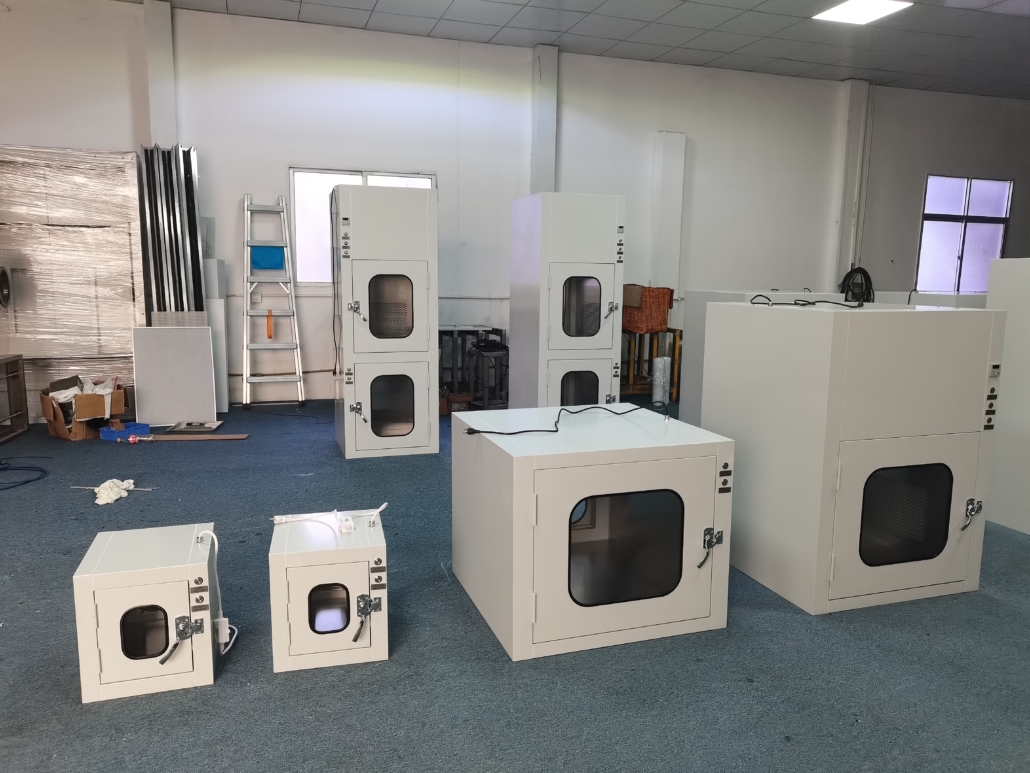Classification of Pass throughs
Passthroughs can be classified based on several factors, including:
- Size: Passthroughs come in various sizes to accommodate different items or equipment.
- Material: They are typically made from materials such as stainless steel or acrylic for durability and cleanliness.
- Design: Passthroughs may feature single or double-door designs, and some may include interlocking mechanisms for added security during transfer.
However,Passthroughs also can be classified based on various criteria including their operation mode (static or dynamic) and the technologies incorporated such as Good Manufacturing Practice (GMP) compliance , the air flow and Vaporized Hydrogen Peroxide (VHP) sterilization.
The following main classifications:
Static & Dynamic:
Static Passthroughs: These are basic passthroughs designed for one-way transfer of materials or equipment between cleanroom areas. They typically feature manual doors and are suitable for low to medium traffic environments.
Dynamic Passthroughs: Dynamic passthroughs incorporate advanced features such as automated doors, air showers, and interlocking systems. They facilitate bi-directional transfer and are ideal for high traffic areas where maintaining cleanliness and minimizing contamination risk is critical.
GMP Compliance:
Some passthroughs are designed to comply with Good Manufacturing Practice (GMP) guidelines, which are regulations ensuring the quality, safety, and efficacy of pharmaceutical products. GMP-compliant passthroughs adhere to strict standards regarding design, construction, and operation, helping pharmaceutical manufacturers maintain compliance with regulatory requirements.
Airflow Characteristics:
Laminar Flow Passthroughs: These passthroughs maintain laminar airflow, which ensures that particles and contaminants are carried away from the transfer area in a controlled manner. They are commonly used in environments requiring high cleanliness levels, such as semiconductor manufacturing.
Turbulent Flow Passthroughs: Turbulent flow passthroughs do not maintain laminar airflow and may have more complex airflow patterns. They are suitable for applications where strict laminar flow is not necessary, such as general cleanroom environments.
VHP Sterilization:
Passthroughs equipped with Vaporized Hydrogen Peroxide (VHP) sterilization technology offer an additional layer of contamination control. VHP is an effective method for sterilizing surfaces and equipment in cleanroom environments. Passthroughs with integrated VHP systems ensure that transferred items are thoroughly sterilized before entering or exiting the cleanroom, minimizing the risk of microbial contamination.
By considering these additional classification criteria, passthroughs can be tailored to meet the specific requirements of different cleanroom environments and applications, ensuring optimal performance and contamination control.


